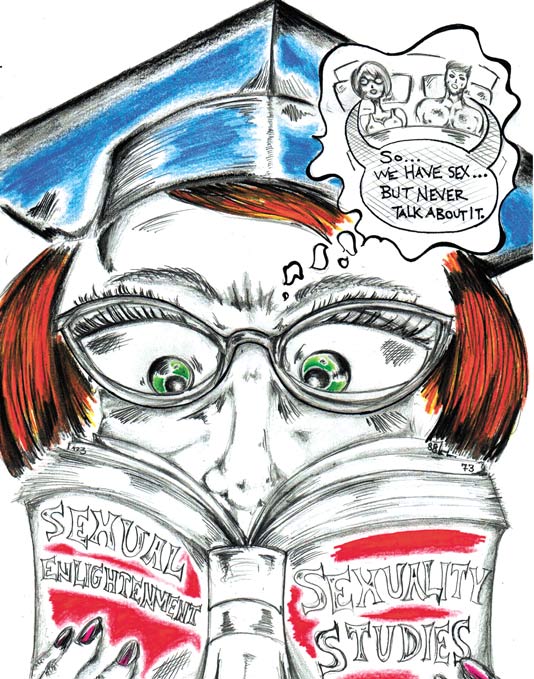
Hating porn doesn’t make it better or safer
By Emilie Medland-Marchen, February 5 2015 —
You can now watch porn in class. At the University of Calgary, there was a block week women’s studies class in porn. York University offers an undergraduate degree in Sexuality Studies. Students in the program study the portrayal of sexual desire and pleasure, different dimensions of sexuality and the dynamics of sexual hierarchy.
The transition between seeing porn as another way to oppress women and studying pornography as a legitimate representation of sexuality has taken a long time to come around.
In the 1980s, news of an undergraduate degree in sexuality studies would have made major headlines. There would have been an outcry over the supposed loss of morality and values. Second-wave feminists would have claimed that studying pornography was inherently patriarchal and demeaning.
In a pre-digital age, pornography was offered through films and magazines, making it an easy target for anti-pornography activists. Today, anyone can find erotic material on the Internet, and being anti-porn isn’t a major feminist struggle.
Feminist activism is still concerned with the portrayal of violence and traditional gender roles. But instead of being solely anti-porn, we now spend more time emphasizing positive portrayals of sexually explicit relationships, including same-gender relationships.
Porn fulfills a desire we have. It’s not enough to point out that the current depiction of graphic sexual relationships is bad if you’re not going to offer an alternative.
This includes the more recent creation of “feminist porn,” an attempt to create porn by and for women. Instead of seeking to abolish porn, the feminist version attempts to promote the portrayal of relationships with healthier sexual dynamics.
In traditional pornography, women are degraded for male arousal. Many anti-pornography activists saw that as a physical manifestation of inequality between the two genders. Today, the inequalities can be addressed and reduced in both heterosexual and LGBTQ couples. Promoting healthy, consensual and mutually pleasurable sexual experiences is becoming more important.
Of course, feminism is still concerned with the portrayal of one-sided violence in sexual relationships. The porn industry continues to hurt and take advantage of women. Condemning degrading and violent relationships is still important, both in porn and in other areas of feminist criticism.
Part of the acceptance of porn might be because removing it from the Internet is impossible. Like it or not, it’s here to stay. The Internet has made porn more accessible, but it’s also enabled people to find communities where their personal sexual experiences are normalized. Sex is discussed more openly than it was 30 years ago, and consumption of porn is at a record high.
Specific types of porn — like BDSM — are an excellent example of this. In the past, BDSM was either poorly understood or seen as yet another representation of the submission of women. But what was once taboo is now mainstream enough to make it into Subway ads and Rihanna songs.
It’s true that media representations of BDSM are lacking. They often ignore the most important aspects of BDSM, like boundaries and consent. But even the popularity of inaccurate movies like Fifty Shades of Grey reflects how normalized the public discussion of sex and BDSM has become.
Normalizing our sexual desires is important. Most of us have sex, and apparently most of us are interested in talking about it. But our discussions of sex are rarely serious, ethical or academic. It’s odd to think of students watching porn in class, but sexuality scholars and modern feminists are finding that studying porn opens up important discussions about sexuality and equality.
Sexuality studies isn’t that unusual for a liberal-arts degree. Students study the intersection of sexuality and other social issues, as well as what sexual dynamics look like around the world.
A lot of assumptions we make about sex are based on porn. We used to talk about the portrayal of negative sexual experiences. Now we talk about the portrayal of equal, healthy and pleasurable sexual experiences. Porn studies might seem like a joke, but it’s bridging the gap between our legitimate concerns about what porn looks like now and what it could look like in the future.
